Want to Subscribe?
Read Corporate India and add to your Business Intelligence

![]() Unlock Unlimited Access
Unlock Unlimited Access

Published: January 31, 2025
Updated: January 31, 2025
Even as a feeling is gaining ground that this year’s Union budget will, like last year, provide major financial sops to the states of key government allies Chandrababu Naidu and Nitish Kumar, major industry stakeholders have presented their proposals to boost a flagging economy.
The US-India Tax Forum has proposed prioritising reforms that foster investor confidence, simplifying the tax regime, and providing targeted incentives for sectors with transformative potential. Key industry sectors are hoping their proposals find a place in the 2025 Union budget.
These include funding and incentives for EV infrastructure, tax breaks for MSMEs and startups, enhancing connectivity by improving highways, roads and public transport systems, policies supporting IoT, AI and quantum computing, IoT-enabled transport systems, smart logistics parks, and advanced port and highway technologies, reducing customs duties on essential medicines, targeted therapy drugs and advanced cancer treatment equipment, and increasing the tax exemption limit on interest payments on home loans to Rs 5 lakh from the existing Rs 2 lakh.
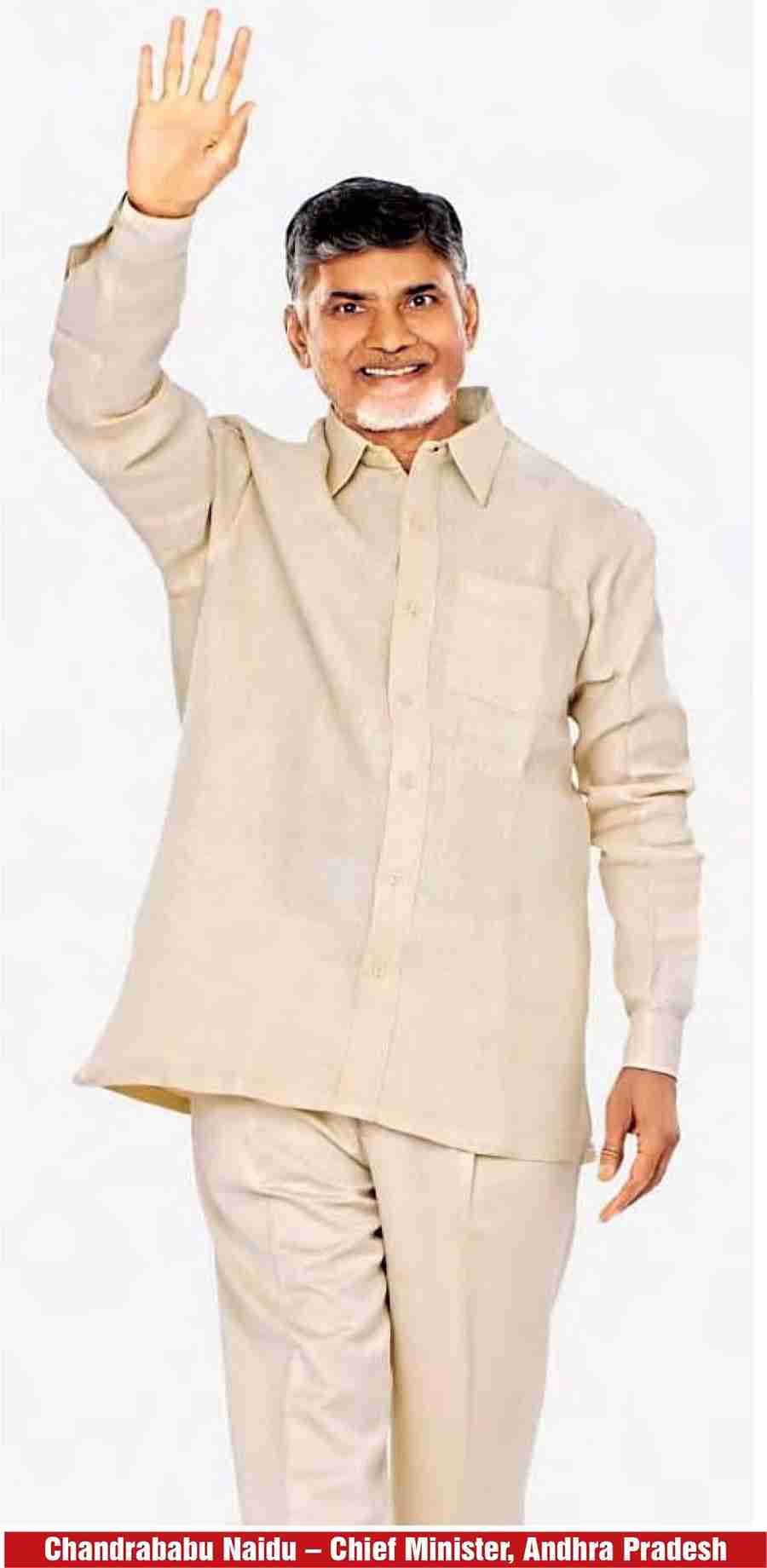
Two cheers for Union Finance Minister Nirmala Sitharaman, who is set to create a record in her domain on on February 1, 2025, when she presents the eighth consecutive Union budget in a row. However, this time her budgetary path won’t be that smooth as the Indian economy is passing through a cyclical slowdown. Consumption spending is slowing as is capital expenditure, both in the private and public sectors. The GDP, which had grown at a rate of 8.7 per cent in fiscal 2022, 7.2 per cent in fiscal 2023 and 8.2 per cent in fiscal 2024, has witnessed a sharp fall to 5.4 per cent in Q2 of fiscal 2025.
Again, this time the budgetary exercise will not be a product of undiluted economics but an exercise very likely coloured by political expediency. The NDA government headed by Narendra Modi is dependent on the support of Chandrababu Naidu of Andhra Pradesh and Nitish Kumar of Bihar, among others. And it is essential to keep these two ‘saviours’ in good humour with large budgetary allocations to these two states. According to Mr Modi’s critics, the main objective of the current government is not so much the healthy growth of the Indian economy and the welfare of the public as it is to save the Prime Minister’s chair.
A clear indication of this phenomenon was visible in the 2024 budget, which was presented after the results of the Lok Sabha elections were announced and Mr Modi’s party, the BJP, failed to get a majority on its own. Post the support of Chandrababu Naidu and Nitish Kumar, both allies got sizeable packages for their states in the previous budget. But this time, the situation is all the more difficult as all is not well in the NDA and Mr Modi’s popularity seems to be waning. The AP and Bihar strongmen are in a defiant mood this time, and it is rumoured that they will not be happy unless offered attractive packages for their states.
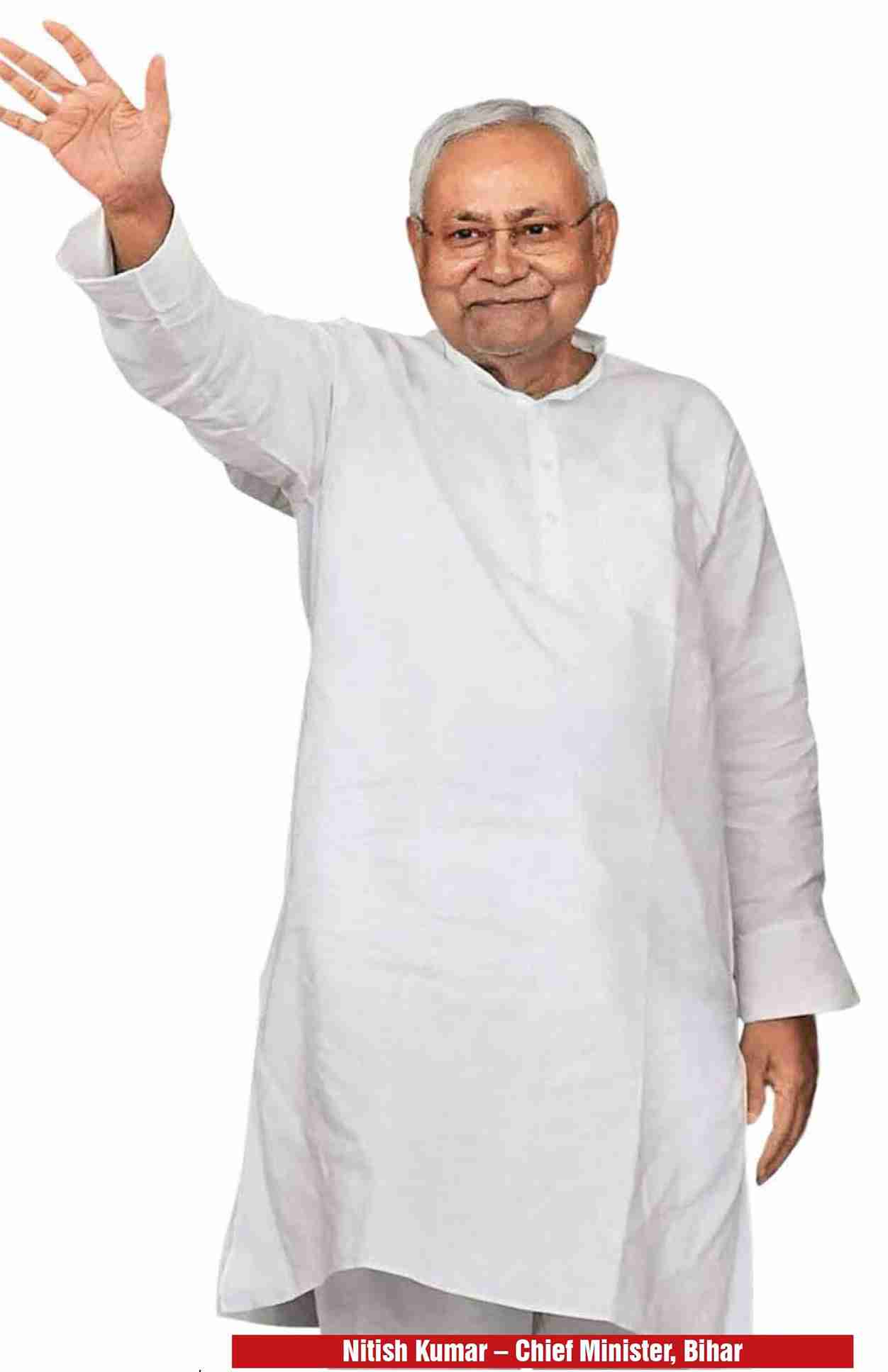
It will be interesting to see what Ms Sitharaman does in these circumstances, come February 1, 2025. She has already completed the preliminary budget exercise — a month-long consultation process which started on December 6, 2024 with industry experts and stakeholders and ended on January 6, 2025. The discussions included 105 participants representing nine key stakeholder groups, including sectors like agriculture, industry, trade unions, education, health, MSMEs, the financial sector and infrastructure. The goal of these consultations was to gather insights and suggestions to shape the upcoming budget and address pressing economic needs.
The US-India Tax Forum – a specialized forum under the US-India strategic partnership — has presented an ambitious set of recommendations aimed at bolstering the country’s global economic standing. These include recommendations such as rationalising TDS structures, extending concessional tax rates for greenfield manufacturing, supporting GIFT City as a global financial hub, and addressing systemic challenges while opening avenues for sustainable growth. Comprising 200 member-companies, the Forum serves as a platform for dialogue on critical tax policy issues, including tax reforsm, and connects Government of India policymakers, global tax experts and the business community. In response to invitations from the Ministry of Finance, the Forum conducted multiple consultations and presented its recommendations on three occasions. These proposals are designed to attract fresh investments, simplify tax structures, and position India as a global growth leader.
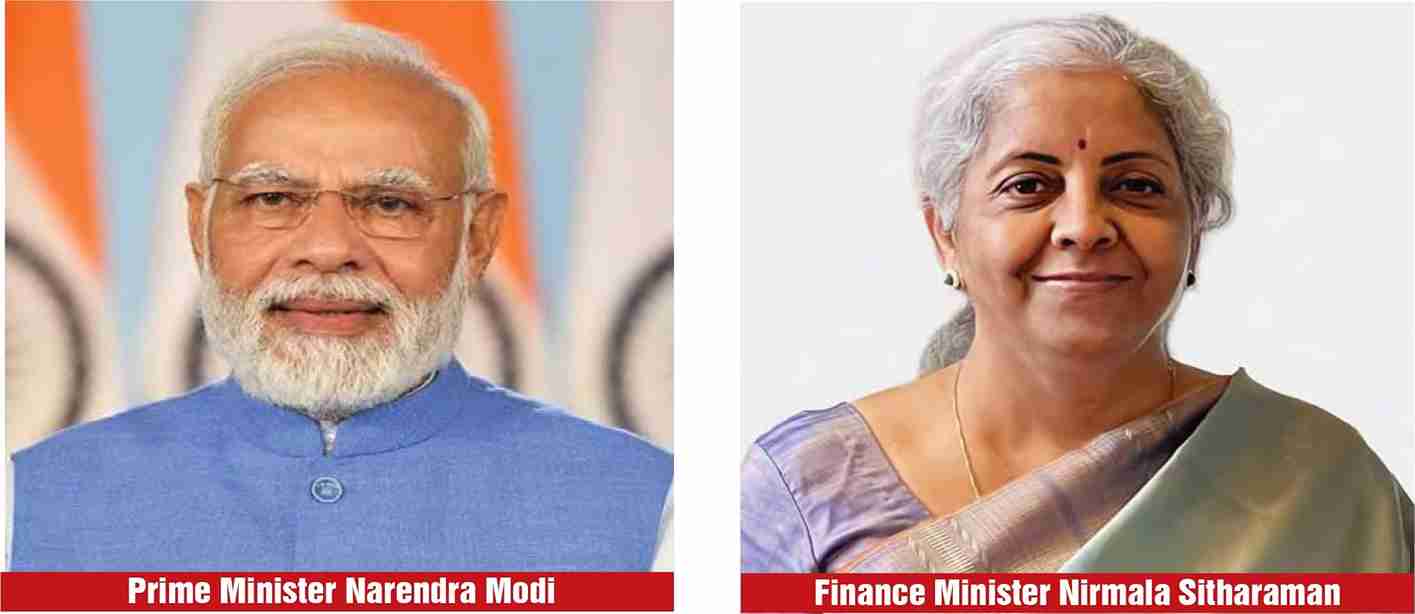
Tarun Bajaj, Chairperson of the US-India Tax Forum and former Revenue Secretary, said, “The Union Budget 2025-26 comes at a critical juncture for India’s economic trajectory. As global headwinds persist, it is imperative for India to prioritise reforms that foster investor confidence, simplify the tax regime, and provide targeted incentives for sectors with transformative potential.” Industry circles are keenly awaiting the presentation of the budget as they hope that their proposals to the Union Finance Ministry will be considered. The following are the expectations of various industry sectors from the 2025 budget.
The key expectations are funding and incentives for EV infrastructure, service centres and tax credits for green technology. Experts suggest that classifying charging infrastructure as part of the infrastructure industry will provide access to cheaper financing options, thus reducing the overall setting-up costs of these facilities. Experts suggest that including charge point operators under priority sector lending will result in lower financing costs for charging infrastructure. A new scheme to upskill technicians to handle EVs and strengthen digital integration with AI-driven solutions will boost efficiency. It could also help enhance job creation and growth of the automotive industry.
Experts hope that the budget will include measures to promote domestic manufacturing, such as subsidies on raw materials and machinery, tax breaks for MSMEs and startups, financial support for e-commerce platforms and digital infrastructure, and enhanced export incentives to help Indian brands compete and showcase designs globally. Provisions to support the Production Linked Incentive (PLI) scheme are also required to drive domestic manufacturing. PLI schemes in sectors like furniture, railway manufacturing, toys and white goods will reduce import dependence and build a robust manufacturing ecosystem.
Infrastructure development is a critical area for which a significant budget allocation is expected. The focus should be on enhancing connectivity by improving highways, roads, and public transport systems. There should be a push for the acceleration of Smart City projects and the development of green infrastructure.
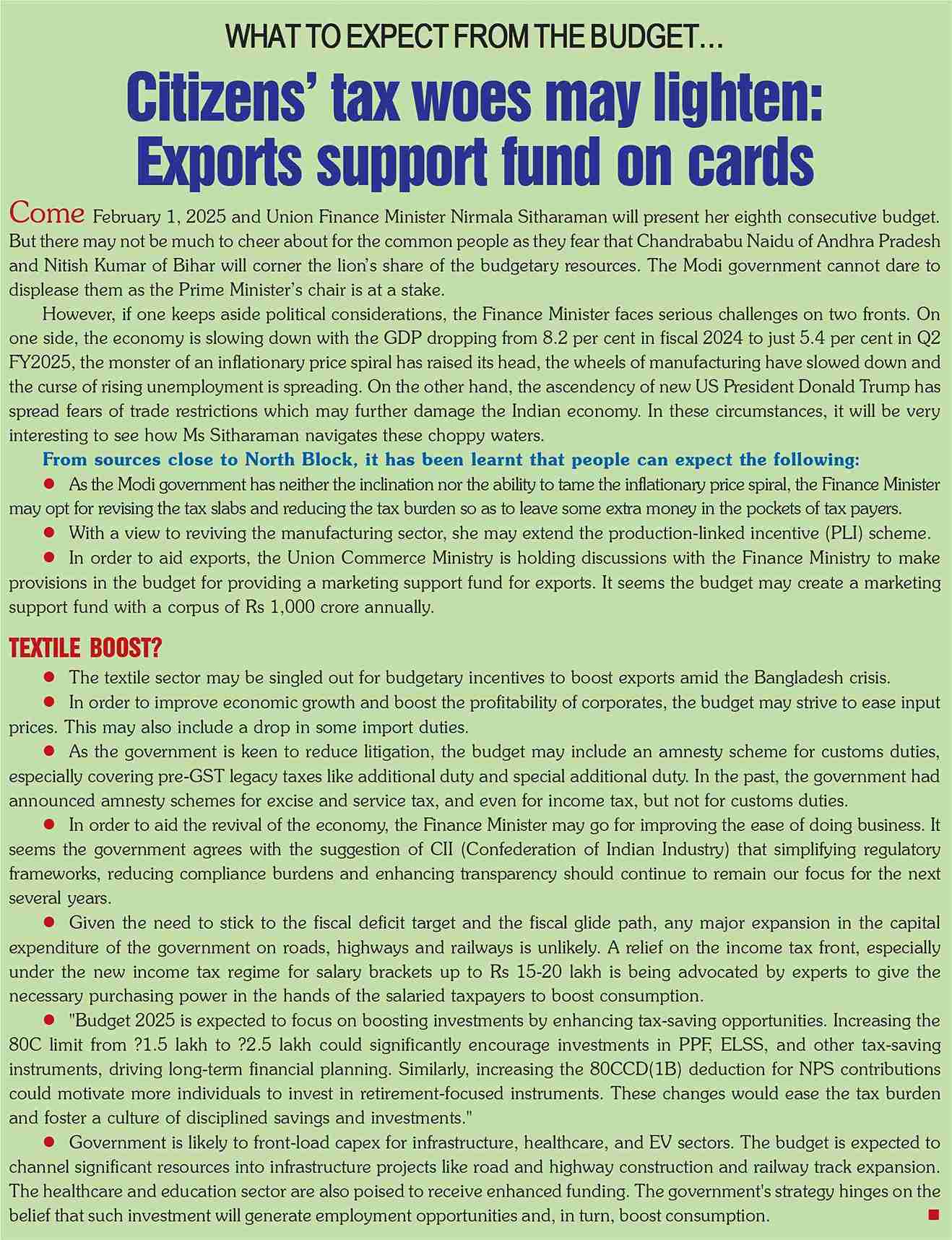
The budget should address key legal and financial challenges that businesses face to improve the ease of doing business. Experts suggest aligning legal and financial policies to foster innovation and sustain investor trust. Policies supporting IoT, AI and quantum computing will accelerate startup innovation and growth.
Experts suggest measures to drive logistics technology by integrating it with emerging technologies like IoT, AI, automation, robotics and 5G. The government can prioritise the development of the National Technology Strategy for Logistics to enable the seamless integration of cutting-edge technologies in this sector. There should be measures to focus on building technology-driven infrastructure, such as IoT-enabled transport systems, smart logistics parks, and advanced port and highway technologies.
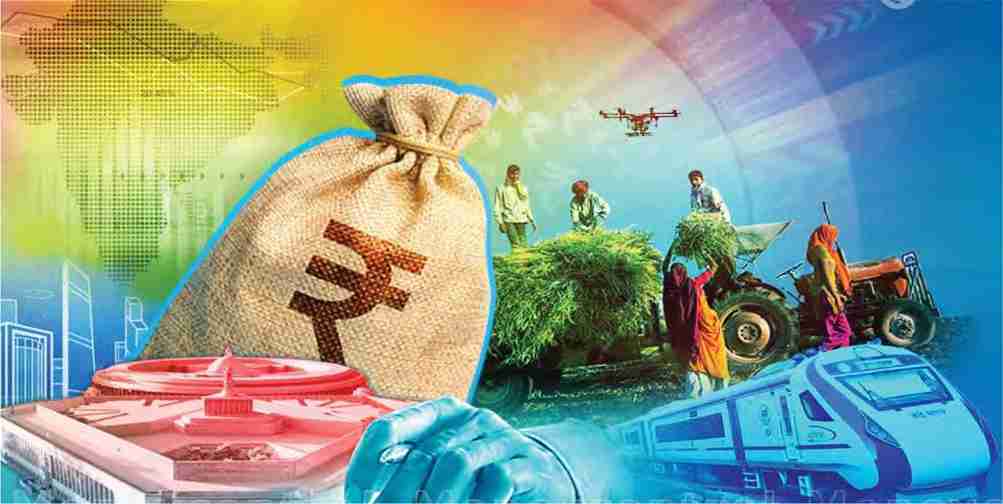
Experts hope that the budget will take measures to reduce customs duties on essential medicines, targeted therapy drugs and advanced cancer treatment equipment, such as robotics and radiotherapy machines. Support should be given to the infra-linked PLI sector to increase the number of beds per patient as per the population requirement. The budget should address systemic gaps between the acute shortage of medical specialists, escalating medical care costs, and inadequate hospital infrastructure to meet the demands of a growing population. There should be measures to expand rural healthcare facilities and increase funding for telemedicine services. The experts have also called for policies to support pharmaceutical production and medical equipment within the country to reduce import dependency.
The real estate sector hopes for progressive reforms that benefit homebuyers and the industry. In line with rising property prices, experts propose increasing the tax exemption limit on interest payments on home loans to Rs 5 lakh from the existing Rs 2 lakh. Reduced stamp duty charges can also drive home ownership for the residential segment. For a large section of the population, house affordability remains a big challenge. Hence, the definition of affordable housing should be expanded to benefit homebuyers and boost end-user demand. There is a demand for single-window clearances for all approvals and a swift resolution of stuck projects to accelerate the sector’s growth. The government should take measures to strengthen the regulations around the real estate sector, including RERA. Experts suggest that reforms in stamp duty and simplified GST regulations for under-construction properties in the budget would also be a welcome change. They hope that the real estate sector will be granted ‘Infrastructure Status’, which could revolutionise the industry by giving access to affordable long-term financing at favourable interest rates and boosting investor confidence.
There are expectations that support would be extended to startups and MSMEs to create jobs, enhance skilling initiatives for an AI-driven economy, simplify compliance through digital solutions, promote hybrid work models, and prioritise employee welfare. Incentives for reskilling programmes, talent acquisition and wellness initiatives can create a more productive and resilient workforce. Streamlined regulations and improved infrastructure will help attract global businesses and talent. Industry experts emphasise the need for skill development programmes aligning with the evolving job market, especially in technology-driven fields.
The Confederation of Indian Industry (CII) has highlighted the need to boost women’s workforce participation for India’s economic growth. It suggests initiatives such as formalising sectors like the care economy, constructing dormitories using CSR funds, and establishing governmentsupported creches in industrial areas to be included in the budget. CII has also called for introducing an ‘Integrated National Employment Policy’ to streamline and consolidate several employment-generating schemes under one umbrella. This unified framework can build on the National Career Service (NCS) portal, ensuring data flow from initiatives of the state and central government. CII has advocated targeted support to employment-intensive sectors such as tourism, construction, textiles, tourism and low-skilled manufacturing to create jobs on a large scale. These sectors could benefit from enhanced PLI schemes, streamlined tariff structures and better alignment of Free Trade Agreements (FTAs) to generate employment and boost exports. It has also proposed the establishment of an International Mobility Authority under the Ministry of External Affairs. This authority would facilitate Government-to-Government (G2G) collaborations to create job opportunities overseas for Indian youth, develop skill development programmes aligned with global demands in partnership with the Ministry of Skill Development and Entrepreneurship, and include foreign language skills and cultural training to prepare workers for international markets. CII has suggested launching an internship programme for college-educated youth in rural areas to work in government offices. Increased funding for vocational training programmes in future-focused areas such as robotics, artificial intelligence and green technologies is essential for addressing immediate employment needs.
Despite the simplicity of the new income tax system, several tax payers still prefer the old tax system on account of its various deductions and exemptions. For their part, salaried tax payers are anticipating income-tax relief in the new budget. Concerned over the slowing down of the economy, industry circles are expecting significant budget announcements ranging from income-tax breaks, GST rationalisation, industry-specific policies and more aimed at reviving the economy and the job market, and boosting consumer sentiments. Real estate circles expect the Finance Minister to increase the price cap for affordable houses to Rs 75 lakh, says Adiya Shah, a leading builder. An increase in the price cap would boost affordable housing in the country and the FM should extend the benefits under section 80 IBA. She should offer complete tax exemption on home loan interest and phasing out stamp duty as part of the 'one nation, one tax' vision. This would further enhance home buyers' confidence and ease their financial burden. In order to boost e-vehicles in the country, the industry feels a need to reduce the GST rate on EV batteries from the current level of 18 per cent to, say, 5 per cent. After all, batteries constitute nearly 50 per cent of an EV's total cost and, hence, it is a significant burden on end-users due to the current GST rate of 18 per cent. Industry circles maintain that the government should focus on simplifying the GST structure and addressing inverted tax issues. A uniform GST rate of 5 per cent across EVs, batteries, components and charging infrastructure would significantly reduce costs and encourage growth in this space and also boost the faster adoption of electric vehicles.
Insurance circles have requested the Finance Minister to ease procedural hurdles for FDI (foreign direct investment) in the insurance sector beyond the current 74% cap. This step could attract more capital, allowing insurers to underwrite larger risks, expand into underserved areas and invest in technology. Additionally, taxation reforms are equally critical. Raising the section 80D deduction limit for health insurance premiums from Rs 25,000 to Rs 50,000 and reducing GST on premiums from 18% to 5% would make insurance more accessible and affordable. Moreover, incentivising technology adoption such as AI and block chain can enhance efficiency and customer experience. Industry watchers are awaiting a host of measures from the Finance Minister, including new income-tax slabs, GST rationalisation, infrastructure allocation and regulatory updates to address economic distress and consumer sentiment.
The financial services sector has pleaded for accelerating growth of IFSC GIFT city. Pointing out that India's ambition to become a global financial hub hinges significantly on the development of the International Financial Services Centre at GIFT city in Gujarat, the industry adds that while the existing regulatory and tax regime have drawn increased activity, much of it remains India-focused. The industry expects the government to ramp up efforts to position IFSC GIFT city as a global financial services hub competing with the likes of Hong Kong, London, Singapore and Dubai. Strengthening outbound financial services and offering global financial services will play a crucial role in achieving this objective.

February 15, 2025 - First Issue

Industry Review

Want to Subscribe?
Read Corporate India and add to your Business Intelligence

![]() Unlock Unlimited Access
Unlock Unlimited Access
Lighter Vein

Popular Stories
Archives
